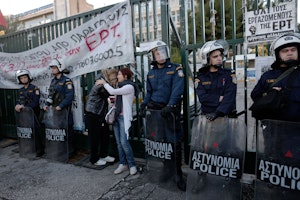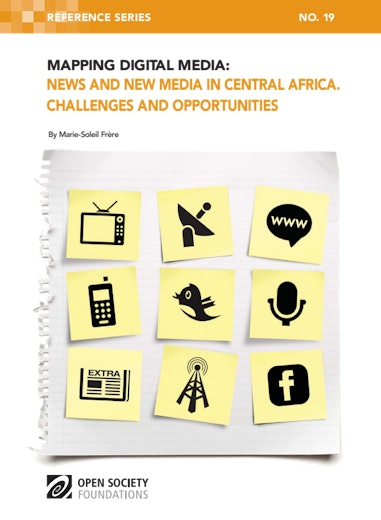The Mapping Digital Media project examines the global opportunities and risks created by the transition from traditional to digital media. Covering 60 countries, the project examines how these changes affect the core democratic service that any media system should provide: news about political, economic, and social affairs.
The Democratic Republic of the Congo (DRC) is the largest country in sub-Saharan Africa. Rwanda and Burundi are among the continent’s smallest states. More than just neighbors, these three countries are locked together by overlapping histories and by extreme political and economic challenges. They all score very low on the United Nations’ human development index, with DRC and Burundi among the half-dozen poorest and most corrupt countries in the world. They are all recovering uncertainly from conflicts that involved violence on an immense scale, devastating communities and destroying infrastructure.
Their populations are overwhelmingly rural and young. In terms of media, radio is by far the most popular source of news. Levels of state capture are high, and media quality is generally poor. Professional journalists face daunting obstacles. The threadbare markets can hardly sustain independent outlets. Amid continuing communal and political tensions, the legacy of “hate media” is insidious, and upholding journalism ethics is not easy when salaries are low. Ownership is non-transparent.
Telecoms overheads are exorbitantly high. In these conditions, new and digital media—which flourish on consumers’ disposable income, strategic investment, and vibrant markets—have made a very slow start. Crucially, connectivity remains low. But change is afoot, led by the growth of mobile internet access.
In this report, Marie-Soleil Frère surveys the news landscapes of DRC, Burundi, and Rwanda. Marshaling an impressive range of data, she examines patterns of production and consumption, the often grim realities of law and regulation, the embryonic state of media policy, the role of donors, and the positive impact of online platforms. Most media outlets now have an online presence. SMS has become a basic tool for reporters. Interactivity gives voice to increasing numbers of listeners. The ease of digital archiving makes it possible to create a collective media “memory” for the first time. Chinese businesses are winning tenders for infrastructure projects.
Above all, the unstoppable flow of digitized information enables ever more people to learn about current events and available services. “The average news consumer in Central Africa will soon leap to new opportunities,” Frère predicts, “without having to pass through the intermediate stages of a personal computer and a fixed telephone line.” The report ends with a set of practical recommendations relating to infrastructure, strategies to reduce access costs for journalists and the public, education and professionalization, donor activity, governance, regulation, and media management.
Download
-
Mapping Digital Media: News and Media in Central Africa (612.8 Kb pdf file)
Download the complete 65-page report.
-
Mapping Digital Media: News and Media in Central Africa (709.18 Kb epub file)
Download the publication as an epub file (for iPad, Nook, and most other e-readers).
-
Mapping Digital Media: News and Media in Central Africa (1.18 Mb mobi file)
Download the publication as a mobi file (for Kindle).
Read more
Voices
What Does Independent Journalism Look Like in the Digital Age?

Journalists and media organizations can find themselves repressed because of inadequate or deliberately repressive policy. Mapping Digital Media examines the situation in 56 countries.
Voices
Early Days for Digital Media in Morocco
Digital media in Morocco continues to advance. With 105 percent mobile phone penetration in the country and a growing appetite for online news more change is on the way.
Voices
Mapping the Brave New Digital World
A series of reports investigates how the growth of digital media is affecting journalism and democracy in 60 countries.
